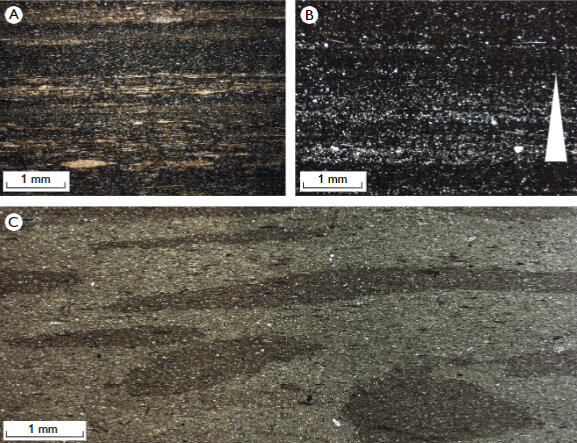
How to Cite
Share
Abstract
In organic-rich shales, pores form during oil and gas genesis within organic matter (OM) domains. The porosity thus differs markedly from that of conventional reservoir lithologies. Here we present the first description of shale fabric and pore types in the lower Palaeozoic shales on Bornholm, Denmark. The pores have been studied using the focused ion beam scanning electron microscope (FIB-SEM) technique, which allows for high resolution SEM images of ion polished surfaces. Shale porosity is influenced by many factors including depositional fabric, mineralogical composition, diagenesis and oil and gas generation (Schieber 2013). Here we discuss some of these factors based on a study of lower Palaeozoic shale samples from the Billegrav-2 borehole on Bornholm (Fig. 1) undertaken by Henningsen & Jensen (2017). The shales are dry gas-mature (2.3% graptolite reflectance; Petersen et al. 2013) and have been extensively used as analogies for the deeply buried Palaeozoic shales elsewhere in Denmark (Schovsbo et al. 2011; Gautier et al. 2014). The Danish lower Palaeozoic shale gas play was tested by the Vendsyssel-1 well drilled in northern Jylland in 2015. Gas was discovered within a c. 70 m thick gas-mature, organic rich succession (Ferrand et al. 2016). However, the licence was subsequently relinquished, due to a too low gas content. The present study confirms a close similarity of pore development between the shales on Bornholm and in the Vendsys sel-1 indicating a high porosity within this stratigraphic level throughout the subsurface of Denmark. However, the rather different development of porosity in the different shale units presents a hitherto neglected aspect of the Palaeozoic gas play in Denmark.
How to Cite
Share
Downloads
Editors Adam A. Garde, Ole Bennike and W. Stuart Watt
The 22 contributions in this issue of Review of Survey activities demonstrate the broad field of activities performed by the Geological Survey of Denmark and Greenland and external partners.
Seven papers on Danish geology comprise an investigation of reservoir sandstones for oil [...]










